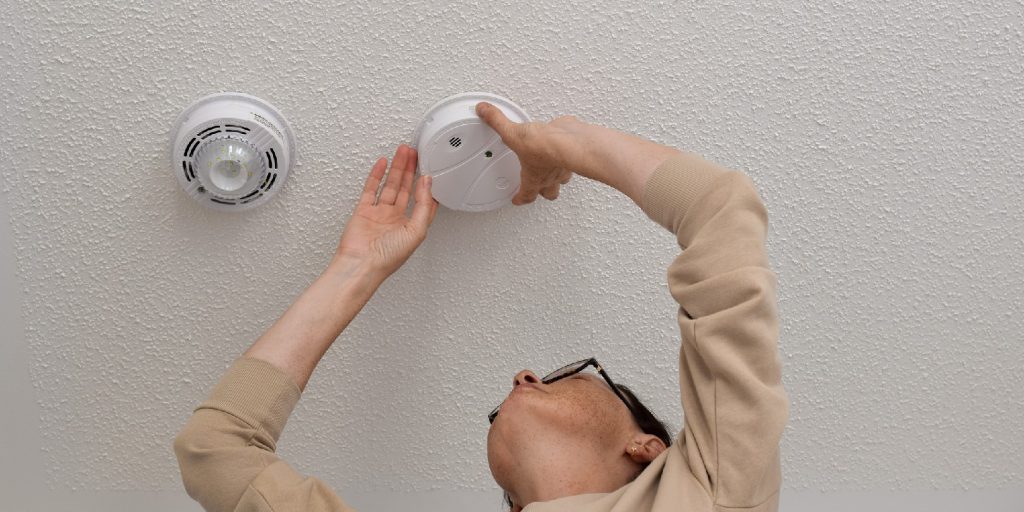Fire Safety: How Long Do Smoke Detectors Last?

Smoke detectors play a crucial role in safeguarding our homes against the devastating effects of fire. These small yet essential devices are our first line of defense against fires; however, did you know that smoke detectors have an expiration date? Most people are unaware that — like any other electronic device — smoke detectors also come with an expiration date that should not be taken lightly. In this post, we will discuss in detail how long smoke detectors last, why it is essential to replace them when they expire, and how you can check their expiration dates. Without further delay, let us get started!
Smoke Detector Lifespan
Smoke detectors typically last between 8 and 10 years. However, these numbers depend on the product’s type and quality. Ionization detectors tend to have a shorter lifespan of about 8 years, while photoelectric detectors typically last up to a decade.
When To Replace Your Smoke Detector
It is imperative to check the expiration date of your smoke detectors regularly. If it has been over ten years since you last installed a new one, it is time to replace it. Most smoke detectors have a label attached to them, which tells you when they were manufactured. If you cannot find your smoke detector’s label, it is better to err on the side of caution and replace the device anyway.
Additionally, there are some tell-tale signs indicators to look out for that mean your smoke detector needs to be replaced. If any of the following occur, replace your smoke alarm immediately:
- Yellow color
- Test button not working
- Consistent beeping
- Alarm sounds without cause
The Importance of Replacing Expired Smoke Detectors
Expired smoke detectors are a potential hazard, as they may not function effectively during emergencies. Over time, a detector’s internal sensor may become degraded, reducing its sensitivity and smoke-detecting abilities. This can lead to delayed response times and endangered lives.
How To Maintain Your Smoke Detectors
It is crucial to maintain your smoke detectors regularly to ensure that they work effectively. Replace batteries every six months or use ones that have a ten-year lifespan. Clean your smoke detectors every few weeks using a soft brush or cloth to remove dust and debris. Additionally, test them monthly by pressing the test button, and if they fail to beep, replace them immediately.
Determining How Many Smoke Detectors You Need
How many smoke detectors you need will depend on your space’s size and layout. For optimal safety, it is always a good idea to install smoke detectors in every room in your home, especially in hallways and bedrooms. The National Fire Protection Association (NFPA) recommends installing at least one smoke alarm on each level of your home, including the basement and the attic.
Smoke Detector Placement
For maximum safety, it is important to strategically place smoke detectors throughout your home. Since smoke rises, the NFPA recommends installing smoke alarms high up on your ceilings or walls. If you mount the alarm on your wall, make sure it is not more than one foot away from the ceiling. If you have a pitched ceiling, install your smoke detector about four inches down from the apex. In your kitchen, be sure to place your smoke alarms at least ten feet away from your cooking appliances to prevent false alarms. Additionally, it is important to install these devices away from any ducts, windows, or doors, as drafts can interfere with their operation and reduce their sensitivity to smoke.
Smoke detectors are essential for your home’s safety, and understanding why and when they expire is crucial. Replacing them every 10 years increases the chances of early fire detection, which can save lives and protect property. By installing, maintaining, and replacing smoke detectors regularly, you can keep your loved ones and your home as safe as possible. Remember — when in doubt, always replace!
Decades of Combined Expertise
Best Buy Guidebook is a culmination of online publishing lessons learned. From SEO to paid ads, our team has experienced the highest of highs and the lowest of lows. Our goal now is simple: Arm readers with the most information possible.
